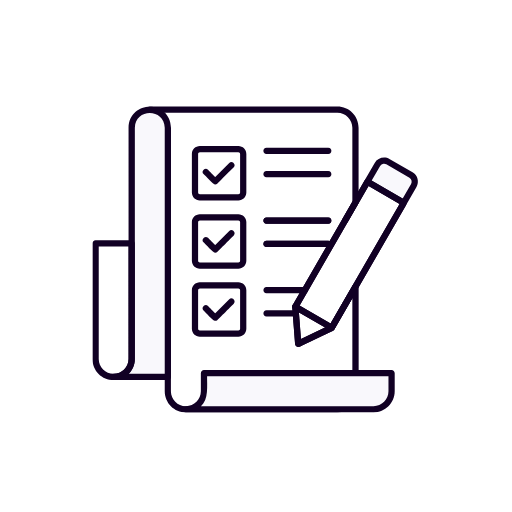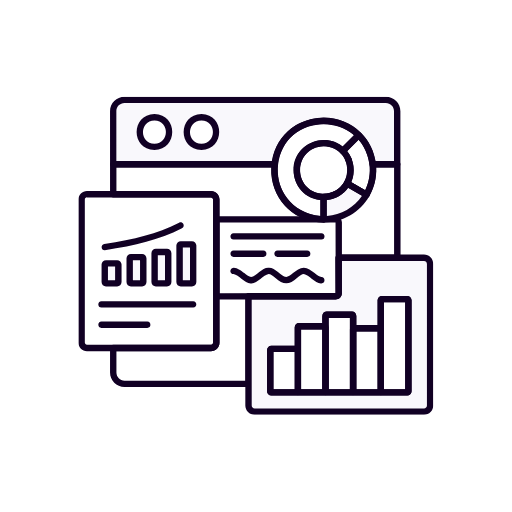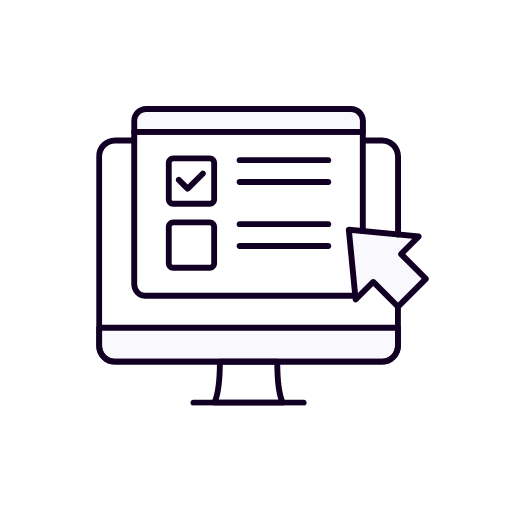Predictive Models
DATA & BI ANALYTICS .> Predictive Models and data forecasting
Predictive Models & Data Forecasting
Build strategic foresight with AI-driven predictive models—helping UAE businesses anticipate trends, optimize decisions, and stay ahead of the curve.
Business-Led Models
We model what matters—sales, churn, risk, or behavior—based on your goals.
Integrated Data Sources
We connect marketing, sales, and ops data for cross-functional accuracy.
UAE Business Context
Our forecasting considers seasonal trends, economic patterns, and local market behavior.
Why Choose Us
Data That Looks Forward
Our predictive models go beyond reports—they analyze patterns, detect signals, and forecast outcomes so you can act smarter, faster, and with more certainty.
“The forecasts helped us prevent losses and act on opportunity windows.”
Kareem Fadel
―Operations Director

Custom Predictive Model Design
We build statistical and machine learning models tailored to your KPIs—forecasting outcomes like sales, churn, or demand based on real-time and historical data.
- Fully tailored logic
- KPI-aligned predictions

Forecast Dashboards & Alerts
Interactive dashboards with forecast visualizations and smart alerts to help you see what’s ahead and respond before it happens.
- Scenario modeling
- Trend alerts built-in
Our Services
Explore UAE Predictive Modeling Services
Whether you’re forecasting growth, preventing risk, or optimizing strategy—our UAE-based predictive modeling services deliver insight you can act on.

Sales Forecasting Models
Predicting monthly, quarterly, or seasonal revenue based on historic and live inputs.

Churn Prediction Models
Identifying customers likely to leave based on usage patterns, engagement, and signals.

Demand Forecasting
Anticipating product/service demand to align inventory, supply chain, and marketing.

Retention Prediction Models
Forecasting which segments will stay loyal based on interaction trends.

Campaign Performance Prediction
Modeling expected ad or email campaign outcomes before launch.

Predictive BI Integration
Embedding models into dashboards for ongoing insight, alerts, and decision triggers.
Predictive Models
Predictive Models: Forecasting Brand Outcomes with Strategic Intelligence in the UAE
In a market that moves as fast and as intelligently as the UAE, brands cannot afford to operate reactively. Predictive models enable strategic foresight—using data, behavior patterns, and trend indicators to anticipate outcomes before they happen. At Octopus, we design and implement predictive models tailored to branding, marketing, audience engagement, and business growth. These models transform uncertainty into planning power, allowing leadership to guide, calibrate, and accelerate performance with clarity.
Why Predictive Models Matter for UAE Brands
Dubai and Abu Dhabi lead the region in data-driven innovation. From AI-powered services to fintech ecosystems and hyper-personalized commerce, the UAE economy rewards brands that think ahead. Predictive models help you understand not just what is, but what’s likely next. They guide timing, targeting, resourcing, and messaging—ensuring you move from insight to action with speed.
Whether you’re launching a new product, entering a new audience vertical, optimizing media spend, or preparing for a leadership transition, predictive modeling lets you simulate scenarios and choose your strategic path with intelligence and foresight. For legacy brands, predictive models reveal where audience sentiment is shifting. For startups, they clarify which audience segments are emerging as high-value or high-risk. For enterprises, predictive modeling is the key to long-term resilience in rapidly shifting economic cycles.
Types of Predictive Models We Build
At Octopus, we develop multiple categories of predictive models depending on client goals. These include audience behavior forecasting, where we anticipate how key user segments are likely to respond to brand campaigns, content releases, or service updates. Channel performance modeling allows us to estimate the future return on investment, engagement quality, or conversion rate for each marketing platform based on historical velocity and competitive benchmarks.
Content performance modeling focuses on projecting which themes, tones, or formats are likely to sustain or increase visibility and credibility across your brand ecosystem. Sentiment prediction uses language patterns, time-of-day posting behavior, and campaign positioning to estimate mood response and tone evolution. Lead quality scoring models are essential for high-ticket brands that depend on qualified, behavior-aligned prospects, while brand health indexing models help us model future changes in brand trust, relevance, and equity value based on your planned brand activity and macro-environmental shifts.
Each model is built to reflect your actual performance trajectory, data availability, brand lifecycle, and strategic direction. Our goal is not to impress with algorithmic complexity—but to empower with interpretive accuracy and decision value.
Strategic Inputs and Data Signals
Predictive models are only as powerful as their inputs. Octopus works with clients to gather and structure data from internal systems, platform analytics, CRM platforms, public sentiment, and category trend signals. We look at cross-channel engagement, campaign timing, search velocity, audience clusters, and metadata patterns.
We integrate both structured inputs (like analytics and CRM fields) and unstructured signals (like social commentary, webinar Q&As, event feedback, and voice-of-customer interviews). We also layer in regional context, including platform penetration, seasonal behavior, and macro signals like Expo or Ramadan campaign surges.
Our input mapping includes creative timing, CTA structures, influencer sentiment, competitor actions, and algorithm changes. We use this to calibrate confidence ranges, define context curves, and create multi-path forecasts with dynamic thresholds.
Model Design, Calibration, and Testing
Octopus builds models using a blend of business logic, behavioral heuristics, regression analysis, clustering, and time-series forecasting. We begin with simple interpretive maps—showing where performance inflected historically and why. We then prototype model frameworks, simulate outputs, and test predictive accuracy against your past six to twelve months of data.
Our calibration process stress-tests predictions against edge cases, such as product recalls, unexpected campaign virality, platform outages, or political shifts. We ensure that models are flexible enough to adapt while staying rooted in causality—not just correlation. We also provide model documentation and confidence interpretation training, so your team can trust the tool and explain its output to other stakeholders.
Predictive Dashboards and Scenario Mapping
We deliver predictive models through dynamic dashboards and visual decision maps. These dashboards allow stakeholders to input new variables—like revised budgets, content pivot plans, or timing changes—and instantly simulate the impact. Outputs are displayed as confidence intervals, growth trajectories, channel path trees, and persona influence shifts.
Scenario mapping includes multi-path forecasts for best case, worst case, and expected case. Visualizations include time-to-impact, budget sensitivity, message fatigue risk, and competitive response timelines. These tools help you make real-time adjustments, preparing your team to pivot fast without losing coherence or confidence.
Integration with Strategic Planning
Predictive modeling becomes most valuable when embedded in planning cycles. Octopus uses quarterly and campaign planning sessions to turn forecast outputs into strategy choices. We use predictive inputs to inform message hierarchies, audience phasing, media spend allocation, and team structure recommendations.
For leadership teams, our models offer a future-facing lens that allows more assertive vision-setting. For creative and content teams, predictions clarify timing, narrative arc, and fatigue points. For performance and growth teams, the models identify underused platforms, over-invested channels, and unrealized high-yield formats.
Optimizing Over Time
Models do not remain static. Octopus runs ongoing back-testing cycles to ensure predictive validity improves. We assess drift by comparing predicted versus actuals every 30, 60, and 90 days. We also refine models based on environmental shifts: from consumer sentiment to media pricing changes, influencer engagement trends, or search intent pivots.
With each round of calibration, model confidence improves. We integrate feedback from campaign results, team reviews, and market developments. Over time, predictive modeling becomes a dynamic asset—not just a data tool, but a strategic advantage.
Team Enablement and Decision Confidence
Predictive modeling must be understood, not just used. Octopus provides team training on interpreting forecasts, communicating probability, explaining caveats, and using prediction to drive collaboration. We build model visualization tools and decision playbooks that make adoption easier across leadership, marketing, and brand teams.
Our goal is to ensure that predictive modeling strengthens confidence—not just forecasting precision. We help teams see further, act faster, and align better. We bridge the gap between intuition and analytics, helping leadership ask smarter questions and take better-aligned action.
Why Octopus for Predictive Models in the UAE
Octopus combines strategic thinking, brand intelligence, data modeling, and visual communication into one integrated system. We understand the nuances of UAE audiences, platforms, and performance expectations. Our predictive models are not built in isolation—they’re embedded in strategy, creative, leadership, and execution. They’re easy to use, easy to understand, and hard to ignore.
We bring together data clarity and brand ambition. We design models that move with your business—tracking today and forecasting tomorrow. In a region that thrives on transformation, predictive models give you the advantage of anticipation.
Choose Octopus for predictive modeling in the UAE—and move from reactive marketing to proactive leadership with data-driven direction and strategic foresight.
Let's get started
Don't get left behind
Stay ahead of the competition with ReachOut – don’t get left behind.

Got a question? Get your answers
Quick answers to questions you may have. Can’t find what you’re looking for? Check out our full documentation.
01. How are predictive models used in marketing in the UAE?
They forecast lead conversions, segment high-value audiences, predict campaign performance, and optimize ad budgets. For example, a predictive model can show which customers are most likely to buy during Ramadan or which ad copy is likely to perform best. This improves ROI and reduces wastage.
02. How long does it take to build and deploy a predictive model?
Simple models can be built in 1–2 weeks; complex ones (with real-time learning or multi-source inputs) may take 4–8 weeks. Model training, testing, and validation are key steps. Ongoing refinement is needed as market behavior shifts.
03. What data is needed to build a predictive model?
You need clean, historical data such as website traffic, CRM logs, sales history, campaign performance, customer demographics, and behavior. In the UAE, localized data (e.g., bilingual behavior, seasonal trends) makes predictions more accurate. The more quality data you have, the better the output.
